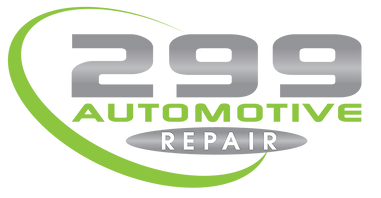Seasonal Maintenance
Optimal Performance with Seasonal Auto Repair and Maintenance
Seasonal maintenance is crucial for prolonging your vehicle's lifespan, saving you both time and money. By preparing your vehicle for different weather conditions ahead of time, you can enhance its value, optimize its performance, and ensure the safety of you and your family.
Seasonal Car Care
Boost Value and Safety with Timely Maintenance
SPRING CLEANING
- Inspect Spark Plugs and Wires: Regularly check your ignition system, as worn spark plugs can reduce performance and fuel efficiency due to frequent firing.
- Ensure Caps are Secure: Verify that gas caps, radiator caps, and brake fluid caps are tightly sealed to prevent leakage and protect against water and debris.
- Clean Your Headlights: Remove grime and debris to enhance visibility for night driving; consider professional cleaning for the best results.
- Rotate Your Tires: Aim to rotate your tires every 7,500 miles to promote even wear and extend their lifespan.
- Monitor Tire Pressure: Regularly check tire pressure, especially with changing temperatures, to maintain optimal inflation levels and improve fuel economy.
- Spring Clean the Interior: Don't forget to tidy up the inside of your car as part of routine maintenance.
- Check Air Filters: Replace both the air filter and cabin air filter to ensure your car has fresh air and the engine breathes efficiently.
- Check Fluid Levels: Maintaining proper levels of all critical fluids is essential; visit us for a comprehensive spring checkup as part of our 299 Complete Care.
- Replace Wiper Blades: Install new wiper blades to enhance visibility during rain, ensuring safer driving conditions.
- Change the Oil: Regular oil changes are crucial for maintaining your car's longevity and optimal engine performance.
SUMMER ROAD TRIPS
- Full Cooling System Checkup: Regularly inspect your radiator, coolant, belts, hoses, water pump, and cooling fans to prevent overheating and potential engine damage. Avoid the inconvenience of a breakdown due to neglected maintenance.
- Monitor Tire Pressure: With increased heat and road friction in summer, tire pressure can rise, leading to overinflation. Maintain the recommended air pressure levels and rotate your tires every 7,500 miles to extend their lifespan.
- Regular Oil Changes: Follow your vehicle manufacturer’s recommended oil change schedule to keep your engine running smoothly. This basic maintenance step is crucial yet often overlooked.
- Air Conditioner Inspection: Ensure your air conditioning is ready for the heat, especially before embarking on a summer road trip. Check for low refrigerant levels and system leaks to avoid discomfort.
- Inspect Belts and Hoses: The summer heat can accelerate wear on serpentine belts and other hoses. Replace any worn belts and hoses to prevent unexpected failures that could leave you stranded.
- Suspension System Check: More driving increases the chances of suspension issues. If you notice less responsive steering or hear unusual noises like grinding or knocking from the wheels, have your suspension components such as ball joints and CV joints inspected for safety.
FALL INTO WINTER
- Transmission Maintenance: Check if the transmission fluid is clean; consider a transmission flush and filter change to protect this crucial component.
- Brake System Inspection: If you hear grinding or squealing, or if your car shudders when stopping, have your brakes and rotors checked for wear, especially important in winter.
- Power Steering Check: Ensure the power steering fluid is at the correct level and in good condition. If the steering wheel shakes or is hard to turn, repairs may be needed.
- Exterior Car Care: Clean and wax your car's exterior to protect it against harsh weather conditions.
- Replace Wiper Blades: Install new wiper blades to improve visibility during rainy weather.
- Oil Change Reminder: Emphasizing again the importance of clean oil for maintaining your car’s health.
- Battery Check: Since batteries often fail in winter, have older batteries load tested before cold weather sets in.
- Maintain Washer Fluid: Use a de-icing variety of washer fluid in colder climates to help keep your windshield clear.
- Emergency Kit Updates: Keep an emergency kit well-stocked with supplies for both you and your car in case of breakdowns.
- Tire Inspection: Check your tires for wear; use a penny to measure tread depth—if you can see all of Abraham Lincoln’s head, consider getting new tires. Also, store snow chains if required by your state.
- Avoid Driving in Bad Weather: If possible, stay home during snow or ice conditions. If travel is necessary, proceed with caution.
- Fuel Level:
Keep your fuel tank more than half full during colder months for added safety and convenience.






